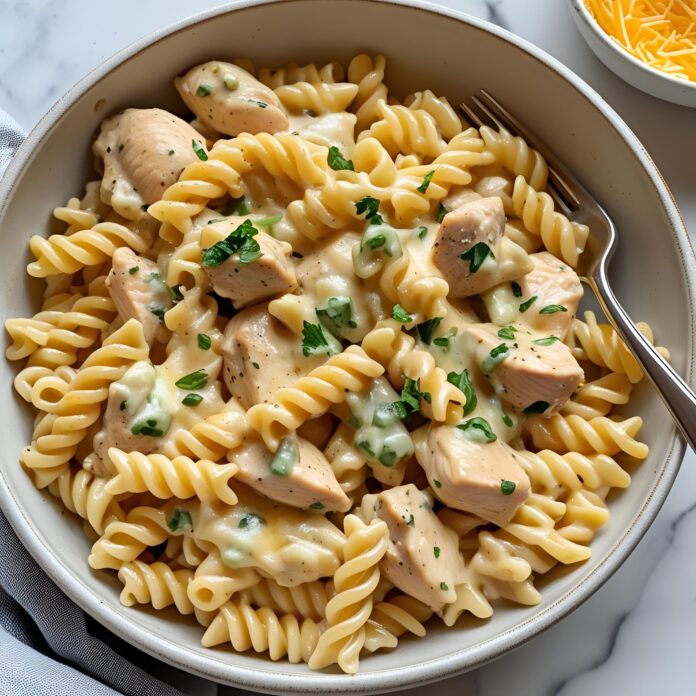Italian Sausage with Bow Tie Pasta Recipe
Italian cuisine is celebrated worldwide for its bold flavors, fresh ingredients, and comforting dishes that bring people together. Among its many beloved staples is pasta paired with savory Italian sausage — a match made in culinary heaven. This dish combines the hearty, spiced flavor of Italian sausage with the unique texture and shape of bow tie pasta (farfalle), creating a meal that is both satisfying and elegant.

Italian Sausage with Bow Tie Pasta is versatile, quick to prepare, and adaptable to various palates. The sausage provides a rich, meaty base infused with aromatic herbs and spices, while the pasta serves as the perfect canvas to soak up all the delicious flavors. The dish is often elevated with a tomato-based sauce, creaminess from cheese or cream, or a medley of fresh vegetables.
This recipe will guide you through every step of preparing Italian Sausage with Bow Tie Pasta — from selecting the right sausage to cooking the pasta perfectly, and building layers of flavor with herbs, garlic, and cheese. Whether you are looking for a weeknight dinner or an impressive dish for guests, this meal delivers on taste, texture, and satisfaction.
Step-by-Step Detailed Instructions for Italian Sausage with Bow Tie Pasta
Step 1: Preparing the Pasta Perfectly
1.1 Choosing Your Pasta:
Bow tie pasta, also known as farfalle, is ideal for this recipe due to its unique shape and ridges that hold sauce beautifully. Use good-quality durum wheat pasta for the best texture.
1.2 Boiling Water:
Fill a large pot with plenty of water — about 4 to 6 quarts per pound of pasta. This helps prevent sticking and ensures even cooking. Add a generous pinch of salt (about 1 tablespoon), which seasons the pasta from within.
1.3 Cooking Time:
Bring the water to a vigorous boil before adding pasta. Stir immediately to separate the pieces. Cook the pasta uncovered, stirring occasionally, until it’s al dente — tender but with a slight chew. This usually takes 10-12 minutes but follow package instructions and start tasting around 8 minutes to avoid overcooking.
1.4 Reserving Pasta Water:
Before draining, scoop out about 1 cup of pasta cooking water. This starchy water is magic for adjusting sauce consistency later, helping it cling to the pasta without thinning it out too much.
1.5 Draining:
Drain the pasta in a colander and shake gently to remove excess water. Do not rinse; rinsing washes away the starch that helps sauce stick.
Step 2: Cooking the Italian Sausage with Precision
2.1 Selecting Sausage:
Choose either sweet or spicy Italian sausage links or bulk sausage. Sweet has mild fennel and herbs, while spicy has chili flakes for heat. Removing the casing creates crumbled sausage pieces that mix well with the pasta.
2.2 Heating the Pan:
Preheat a large skillet over medium-high heat for 2 minutes to ensure it’s hot enough. Add olive oil and swirl to coat.
2.3 Browning the Sausage:
Add the sausage meat, breaking it up with a wooden spoon. Let it sear without stirring too much for the first 2 minutes; this helps develop a golden crust and deep flavor. Then stir and cook until fully browned and cooked through, about 6-8 minutes total.
2.4 Removing Excess Fat:
Using a slotted spoon, transfer the cooked sausage to a bowl, leaving about a tablespoon of rendered fat in the pan. Too much fat can make the dish greasy; too little loses flavor.
Step 3: Sautéing Aromatics and Vegetables for Depth
3.1 Onions:
Add chopped onions to the sausage fat. Lower heat to medium. Stir occasionally until onions soften and become translucent, about 4-5 minutes. This gentle cooking releases sweetness and mellows their bite.
3.2 Garlic:
Add minced garlic and cook just 30 seconds to 1 minute. Garlic burns quickly and becomes bitter, so watch carefully.
3.3 Optional Vegetables:
If using red bell pepper, add it now and sauté for 3-4 minutes until tender but still vibrant. Cherry tomatoes add brightness and juiciness; add them last and cook just until they start to soften and release juices (about 2-3 minutes).
3.4 Seasoning:
Sprinkle with salt, pepper, and red pepper flakes if desired. These seasonings help build the flavor base before adding liquids.
Step 4: Building a Rich Sauce
4.1 Deglazing the Pan:
Pour chicken broth or white wine into the hot pan to deglaze, scraping up browned bits (fond) from the bottom. These bits are packed with umami flavor.
4.2 Adding Tomatoes:
Pour in crushed tomatoes or marinara sauce. Stir to combine, then bring to a gentle simmer.
4.3 Simmering:
Let sauce simmer uncovered for 5-7 minutes to reduce slightly and deepen in flavor.
4.4 Making it Creamy (Optional):
For a luscious creamy sauce, slowly stir in heavy cream or half-and-half. Warm through but don’t boil, which can cause cream to curdle.
Step 5: Bringing It All Together
5.1 Reintroducing Sausage:
Add browned sausage back into the skillet, folding it into the sauce so the flavors meld.
5.2 Adding Pasta:
Toss the drained bow tie pasta into the sauce and sausage mixture. Use tongs or a large spoon to coat the pasta evenly.
5.3 Adjusting Sauce Consistency:
If the sauce feels too thick or dry, add a splash of the reserved pasta water a little at a time. This starchy water binds the sauce and pasta, creating a silky finish.
5.4 Final Flavor Touches:
Stir in grated Parmesan cheese and fresh herbs like basil or parsley. Cheese adds savory richness and herbs bring freshness and color.
Step 6: Serving and Presentation
6.1 Plating:
Divide the pasta and sausage evenly among warm plates or bowls.
6.2 Garnishes:
Sprinkle extra Parmesan and fresh chopped herbs on top. For an extra flavor kick, offer crushed red pepper flakes or a drizzle of good olive oil on the side.
6.3 Pairing Suggestions:
Serve with a crisp green salad, garlic bread, or roasted vegetables. A glass of medium-bodied red wine like Chianti or Sangiovese complements the robust flavors beautifully.
Recipe Variations
1. Using Different Types of Sausage
-
Sweet Italian Sausage: Mild and flavored with fennel, garlic, and herbs. Ideal if you prefer a less spicy dish that’s still rich and flavorful.
-
Spicy Italian Sausage: Contains crushed red pepper flakes, offering a piquant kick that adds warmth. Adjust red pepper flakes in the sauce accordingly.
-
Chicken or Turkey Italian Sausage: A leaner option that reduces fat content but still delivers great flavor. Cook carefully to avoid drying out.
-
Vegetarian or Plant-Based Sausage: For a meat-free alternative, use plant-based sausage crumbles seasoned with Italian herbs. Pair with sautéed mushrooms for added umami.
2. Sauce Variations
-
Tomato-Based Sauce: Classic marinara or crushed tomatoes with garlic and herbs.
-
Creamy Tomato Sauce: Add heavy cream to create a rich, silky texture.
-
Olive Oil & Garlic Sauce: For a lighter version, toss pasta and sausage with olive oil, garlic, fresh parsley, and lemon zest.
-
Pesto Sauce: Stir in basil pesto for a fragrant, herbaceous twist.
3. Additional Vegetables
-
Spinach or Kale: Stir in fresh greens at the end and wilt them gently in the residual heat.
-
Mushrooms: Sauté mushrooms with onions to boost the earthy flavor.
-
Zucchini or Yellow Squash: Adds subtle sweetness and texture.
-
Olives or Sun-Dried Tomatoes: For bursts of salty, tangy flavor.
Ingredient Insights & Substitutions
Italian Sausage
-
Quality Matters: Use high-quality sausage with natural casings or fresh bulk sausage for best flavor.
-
Homemade Sausage: You can make your own by seasoning ground pork with fennel seeds, paprika, garlic powder, and red pepper flakes.
Bow Tie Pasta (Farfalle)
-
Alternatives: Penne, rigatoni, or fusilli also work well to hold sauce.
-
Gluten-Free: Use gluten-free pasta if needed; cook according to package.
Cheese
-
Parmesan: Opt for freshly grated Parmigiano-Reggiano for the best nutty, savory flavor.
-
Substitutes: Pecorino Romano adds a sharper, saltier bite.
Herbs
-
Fresh vs. Dried: Fresh basil and parsley provide vibrant color and brightness. If using dried herbs, add them earlier in the cooking process.
Expert Tips and Tricks
Cooking Tips
-
Don’t overcrowd the pan: Brown sausage in batches if needed to ensure proper searing and flavor development.
-
Save pasta water: The starch in pasta water helps emulsify the sauce and coat the noodles beautifully.
-
Rest sausage after cooking: Letting it rest briefly keeps juices locked in.
-
Taste and adjust: Always taste your sauce before serving — balance acidity, salt, and heat as needed.
Historical and Cultural Background
Italian sausage has its roots in Italy’s rich culinary tradition, where pork sausages seasoned with fennel seeds and herbs have been staples for centuries. They vary regionally — from spicy Calabrian sausages in the south to milder varieties in the north.
Bow tie pasta, or farfalle, originated in Northern Italy, with its name meaning “butterflies,” inspired by its shape. Its ridged texture holds sauces well, making it popular in many pasta dishes.
Combining hearty sausage with pasta is a classic example of rustic Italian cooking — simple, flavorful, and satisfying — perfect for family meals and celebrations alike.
Italian Sausage with Bow Tie Pasta Recipe
Italian cuisine is celebrated worldwide for its bold flavors, fresh ingredients, and comforting dishes that bring people together. Among its many beloved staples is pasta paired with savory Italian sausage — a match made in culinary heaven. This dish combines the hearty, spiced flavor of Italian sausage with the unique texture and shape of bow tie pasta (farfalle), creating a meal that is both satisfying and elegant.
Ingredients
- 12 oz bow tie pasta (farfalle)
- 1 lb Italian sausage (mild or spicy, casings removed)
- 1 tablespoon olive oil
- 1 small onion, diced
- 3 cloves garlic, minced
- 1 (14 oz) can diced tomatoes (or 1 ½ cups fresh tomatoes, chopped)
- 1/2 cup heavy cream (optional, for creamy sauce)
- 1/2 teaspoon crushed red pepper flakes (optional)
- 1 teaspoon dried Italian seasoning (or a mix of oregano, basil, thyme)
- Salt and black pepper to taste
- 1/2 cup grated Parmesan cheese
- Fresh basil or parsley, chopped (for garnish)
Instructions
- Cook pasta:
Bring a large pot of salted water to a boil. Cook bow tie pasta according to package instructions until al dente. Drain and set aside. - Cook sausage:
While pasta cooks, heat olive oil in a large skillet over medium heat. Add Italian sausage, breaking it apart with a spoon, and cook until browned and cooked through (about 6–8 minutes). Remove sausage from skillet and set aside. - Sauté aromatics:
In the same skillet, add diced onion and cook for 3–4 minutes until softened. Add garlic and cook for another minute. - Make sauce:
Add diced tomatoes, Italian seasoning, red pepper flakes, salt, and pepper. Simmer for 5–7 minutes to let flavors meld. If using, stir in heavy cream and warm through. - Combine:
Return cooked sausage to the skillet, stir to combine. Add the cooked pasta and toss to coat everything evenly. - Finish:
Sprinkle Parmesan cheese over the pasta and toss again. Garnish with fresh basil or parsley before serving.
Notes
- Sausage options: Use spicy, sweet, or even turkey sausage depending on your preference.
- Make it vegetarian: Substitute sausage with sautéed mushrooms or plant-based sausage.
- Add veggies: Spinach, bell peppers, or zucchini work great stirred into the sauce.



